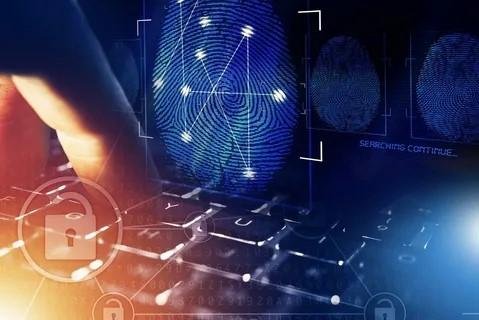The Explosive Growth of the Digital Forensics Market
The digital forensics market is on the brink of remarkable expansion, with projections indicating a leap from USD 15.67 billion in 2025 to approximately USD 46.14 billion by 2035. This growth represents a robust Compound Annual Growth Rate (CAGR) of 11.4% over the forecast period. The driving forces behind this surge include the increasing frequency of cybersecurity breaches, insider threats, and heightened data privacy concerns. As organizations across various sectors invest more in digital evidence acquisition and analysis, digital forensics has become an indispensable tool in combating cybercrime and ensuring compliance with regulatory standards.
The Role of Digital Forensics
Digital forensics is crucial for identifying, preserving, and analyzing digital data for investigative purposes. It serves as a backbone for cybercrime investigations, fraud detection, corporate compliance, and litigation support. By 2025, a growing number of organizations are expected to implement proactive digital forensics systems, enabling them to respond swiftly to breaches and adhere to stringent regulations such as the General Data Protection Regulation (GDPR) and the California Consumer Privacy Act (CCPA).
Evolving Digital Landscape
The complexity of digital investigations is escalating, driven by the rise of encrypted communication, cloud storage, and remote work environments. This evolution is prompting service providers to offer specialized forensic capabilities, including mobile device analysis, incident response, malware detection, and blockchain tracing. By 2024 and 2025, advancements in machine learning and AI-enhanced analytics are expected to automate evidence correlation, significantly reducing analysis time and improving efficiency.
Digital forensics services are witnessing the highest growth, fueled by the demand for scalable expertise and turnkey response capabilities. Many enterprises are outsourcing investigations to specialized firms equipped with the necessary certifications and legal knowledge. Government and law enforcement agencies remain the largest end-users, accounting for a substantial 23.3% market share in 2025, as digital evidence becomes central to modern crime investigations and national security strategies.
Key Industry Drivers
The surge in cybercrime, including ransomware attacks, financial fraud, and deepfake fraud, is a primary catalyst for the adoption of digital forensic solutions. Organizations are increasingly leveraging these tools to detect, investigate, and respond to cyber threats while maintaining data integrity. The proliferation of Internet of Things (IoT) devices has broadened the attack surface, necessitating forensic experts to investigate security events across a growing number of endpoints.
Stringent data protection regulations, such as GDPR, CCPA, HIPAA, and PCI-DSS, are further boosting the adoption of digital forensics. Non-compliance with these laws can lead to severe penalties, compelling organizations to implement digital forensics solutions for continuous network monitoring, breach detection, and post-incident investigations.
Technological Advancements
The increasing adoption of cloud-based and AI-powered digital forensic solutions is enhancing investigation capabilities. Cloud forensics tools are instrumental in tracking malicious activities in cloud environments, while AI-driven automation improves the speed and accuracy of investigations through rapid anomaly detection and predictive threat analysis. New blockchain forensic techniques are also being developed to ensure tamper-proof digital evidence.
However, challenges in encryption and data privacy are hindering the collection of digital evidence. The widespread use of end-to-end encryption and privacy-focused technologies restricts what forensic specialists can recover, posing both legal and technical challenges.
Regional Dynamics
The USA leads the digital forensics market, driven by stringent cybersecurity regulations and technological advancements, with a projected CAGR of 9.5%. Germany is experiencing rapid growth due to GDPR compliance and rising cyber threats, showing an 8.4% CAGR. The UK is also witnessing strong growth with a 9.9% CAGR. In Asia, China is projected for a robust 11.6% CAGR, fueled by rapid digital transformation and increasing cybercrime, while India is set for a significant 12.2% CAGR, driven by digitalization and government cybersecurity initiatives.
Competitive Landscape
The digital forensics market is characterized by intense competition, with prominent players focusing on AI-based forensic automation, cloud-based investigations, and enhanced threat intelligence solutions. Leading companies such as IBM Corporation, OpenText Corporation, FireEye (Trellix), and Cisco Systems are offering comprehensive forensic suites. Mid-tier players like Magnet Forensics and Cellebrite are specializing in mobile forensics and e-discovery. Recent strategic mergers, such as LogRhythm and Exabeam, are forming new companies focused on AI-powered security operations platforms. These companies are continuously investing in research and development, collaborations, and acquisitions to meet the increasing cyber threats and regulatory compliance needs across various industry verticals.
Conclusion
As digital crime becomes more sophisticated and pervasive, digital forensics is poised to become a core element in both public and private sector risk mitigation frameworks. The integrity and security of digital information are paramount, and the digital forensics market is set to play a crucial role in ensuring that organizations can effectively respond to the challenges posed by an ever-evolving digital landscape.
For those interested in exploring more insights into this dynamic market, comprehensive reports and analyses are available, offering a deeper understanding of the driving factors and trends shaping the future of digital forensics.


